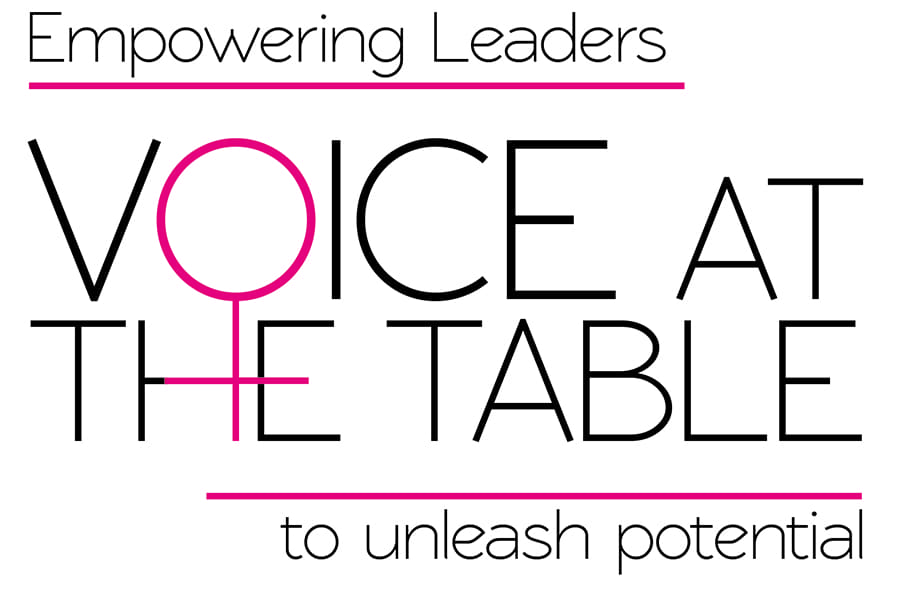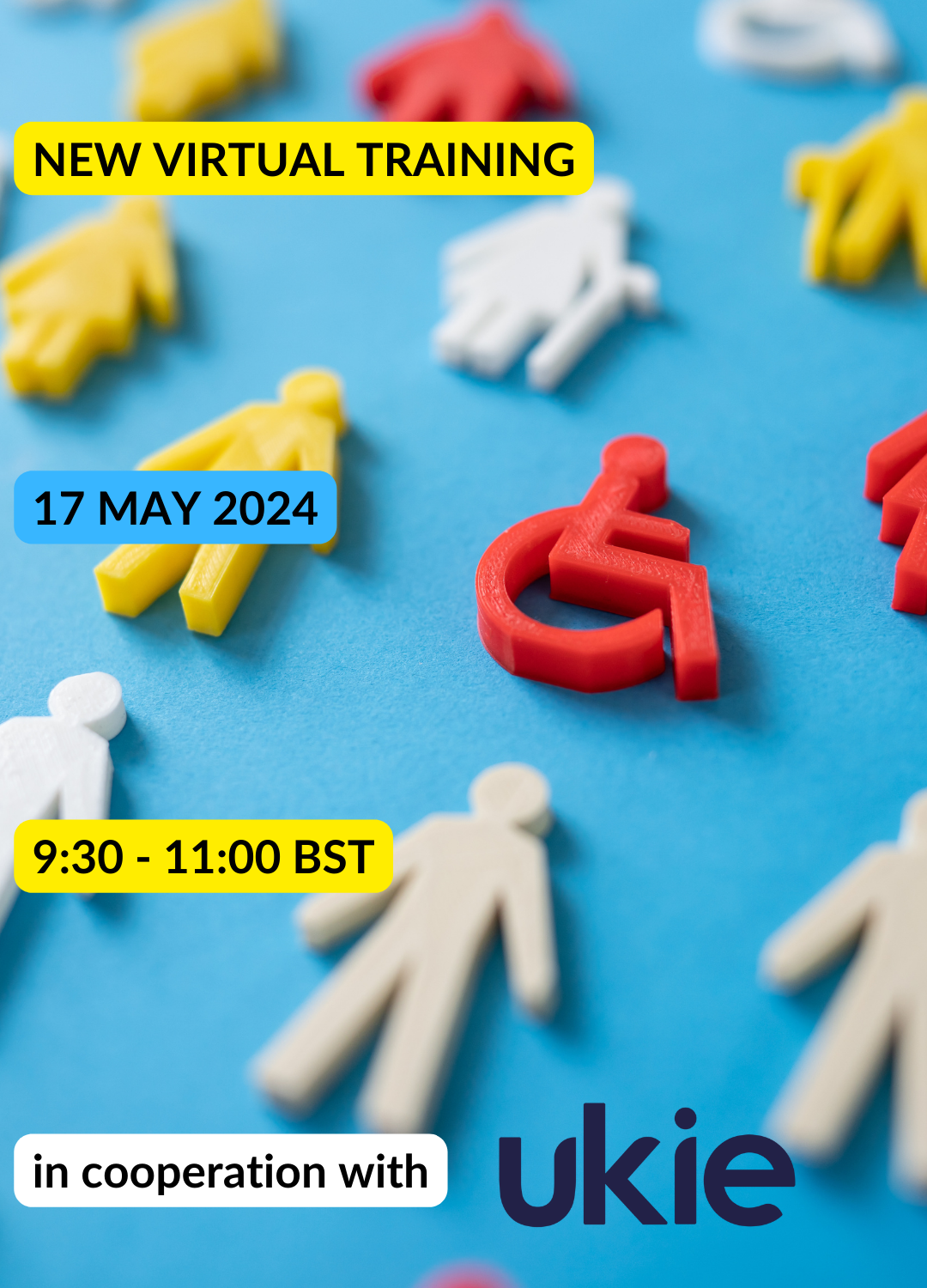By Rina Goldenberg Lynch and Suzanne Bird
At the end of September we celebrated our 10th anniversary. One of the ways in which we are marking this is with a look back at the learnings from a decade of EDI consulting and a look forward to what the next 10 years might look like. Last week’s blog covered the first part of an interview by Voice Associate Suzanne Bird, when I answered questions from our Associates about the first 10 years of Voice At The Table. This week’s blog is the second part of that interview, covering my thoughts on what’s to come in the next 10 years, both for Voice and for EDI.
Suzanne: Last week, we spoke about your time with Voice At The Table so far and how much you’ve learned. Looking ahead, when it comes to Equity, Diversity & Inclusion (EDI), what do you still want to learn?
Rina: I still want to learn how best to use technology to help people learn and use new skills, such as empathy and better listening. An aspect of technology that we’re already starting to embrace is to make it easier for people to practise new behaviour habits. Unlearning some of our old habits and perspectives will take a lot of practice, and it is difficult to make the time for this. Technology, for instance, can nudge us to make small incremental changes by practicing them often and regularly.
Suzanne: What trends do you see emerging in the EDI space in the next 10 years?
Rina: I think the focus will move even more towards behaviour change. Norms are actively and swiftly changing, so that what’s now acceptable or even desirable behaviour is already very different from many people’s understanding of what that is. Not a day goes by without an article in the papers identifying something someone did that society no longer finds appropriate. This indicates that the shift in behaviour is greater than most people comprehend. Therefore, identifying, unpicking, understanding and communicating what’s appropriate or inappropriate will become even more important in the next few years This is going to be particularly important in the context of creating inclusive, psychologically safe work environments.In terms of Diversity, our understanding of diversity of thought is going to grow and we will start to see benefits from the tools and initiatives that we’re currently designing/providing for a specific group of people benefitting others in unexpected ways. Take, for instance, advances in accessibility software that makes it easier for neurodivergent people to access information at work. What we’re learning is that those who are not neurodivergent are finding this software helpful to them as well. It’s only when we go past the first threshold of bringing more Diversity through our doors and creating a welcoming environment for everyone when we truly start to uncover the greater benefits of Diversity; that’s something we have only just begun to understand.
Finally, in terms of organisational roles, it will be standard for companies to have a dedicated in-house EDI role and EDI will become a standard must-have function as important as HR or Finance roles.
Suzanne: What will Voice look like in 10 years?
Rina: In 10 years’ time I imagine we will be doing lots of novel things that help organisations tap into the diversity of their people on a larger scale. We will also continue to work with senior influencers and leaders to help them become more conversant in this space. On the leadership side at present, the talk about EDI is passionate at its best, but leaders don’t always know what others need to hear in order to shift mindsets and effectively tackle biased practices in the workplace. Voice At The Table will be influential in creating the much-needed change in this regard.
Suzanne: From your experience with clients, what advice would you offer to help them leapfrog their journey to inclusion?
Rina: I would simply say, keep your eyes on the prize. And the prize is Diversity! If you do the hard work, you will reap the expected as well as the unexpected rewards of Diversity.
If you would like to tap into our experience in helping organisations navigate the EDI Journey, why not set up an Ask Me Anything call with Rina?
Suggested Reading












 Advances in achieving gender balance in the corporate space are slow, at best. Despite the deafening cries for progress towards gender parity, progress is, indeed, evading us. The latest gender pay gap statistics in the UK prove the point, with the largest pay gap reported in the construction sector at 25%, followed by finance and insurance sector at 22% and education at 20%. The World Economic Forum predicts it will take the world another 217 years to reach parity, and many other reports show that, while we appear to be inching closer to a more diverse and inclusive world, progress is, well, patchy and sometimes questionable.
Advances in achieving gender balance in the corporate space are slow, at best. Despite the deafening cries for progress towards gender parity, progress is, indeed, evading us. The latest gender pay gap statistics in the UK prove the point, with the largest pay gap reported in the construction sector at 25%, followed by finance and insurance sector at 22% and education at 20%. The World Economic Forum predicts it will take the world another 217 years to reach parity, and many other reports show that, while we appear to be inching closer to a more diverse and inclusive world, progress is, well, patchy and sometimes questionable. The intentions behind programmes that support the advancement of women in the organisation are great, but there are a number of problems with this approach: (i) when programmes cater to women only, the overarching message the company is sending to its women is that there is something wrong with them and that it is trying to ‘fix’ them. This is particularly true of leadership programmes which intimate that women need more development than men to become leaders; (ii) even successful female-only initiatives tend to backfire because, to the extent they succeed to motivate and engage women, by the time women go back to their unchanged work environment, frustration starts to set in as they continue to perform in an environment that fails to recognise the value of their authentic contribution; and (iii) initiatives that are aimed at a specific segment of the population tend to be divisive and fail to attract the requisite amount of support and inclusion to harness lasting progress.
The intentions behind programmes that support the advancement of women in the organisation are great, but there are a number of problems with this approach: (i) when programmes cater to women only, the overarching message the company is sending to its women is that there is something wrong with them and that it is trying to ‘fix’ them. This is particularly true of leadership programmes which intimate that women need more development than men to become leaders; (ii) even successful female-only initiatives tend to backfire because, to the extent they succeed to motivate and engage women, by the time women go back to their unchanged work environment, frustration starts to set in as they continue to perform in an environment that fails to recognise the value of their authentic contribution; and (iii) initiatives that are aimed at a specific segment of the population tend to be divisive and fail to attract the requisite amount of support and inclusion to harness lasting progress. In many cases, executive teams are genuine about their desire to advance women. But they don’t recognise it as a central business priority and look at it as a project to be managed. Having identified it as an issue, they tend to look for the right person to address it which, in many cases, happens to be the one woman on the executive team. I have heard this story so many times.
In many cases, executive teams are genuine about their desire to advance women. But they don’t recognise it as a central business priority and look at it as a project to be managed. Having identified it as an issue, they tend to look for the right person to address it which, in many cases, happens to be the one woman on the executive team. I have heard this story so many times. In many cases, gender imbalance exists primarily at the very top. Many companies tackle the issue by bringing in lateral hires as they don’t appear to have their own senior female pipeline to address the disparity. Sadly, this is one of the worst solutions to this issue. Having spoken to a number of corporates who have taken such measures it becomes clear very quickly that there is no substitute for ‘growing your own’. Attracting senior women from elsewhere is, at best, a temporary solution. These freshly-hired women – like the the women who have been at the company for years – will be exposed to the very same culture that failed to produce the senior pipeline in the first instance. As a result, the new senior female leaders are likely to become disenchanted with their roles as they come to realise that they are not hired for their expertise and contribution but, instead (to put it bluntly), to tick a box. Even if they do succeed in making a contribution to the company that is genuinely valued, companies have to carefully guard these women from being hired away by others with a similar agenda. The reality is that there are not that many senior women out there who seem to satisfy the existing requirements for board or senior level hires (although, of course, many more women can indeed to the job) so, unless companies develop their own female leadership pipeline, they stand to lose those recent hires to others that have a similar approach to gender balance.
In many cases, gender imbalance exists primarily at the very top. Many companies tackle the issue by bringing in lateral hires as they don’t appear to have their own senior female pipeline to address the disparity. Sadly, this is one of the worst solutions to this issue. Having spoken to a number of corporates who have taken such measures it becomes clear very quickly that there is no substitute for ‘growing your own’. Attracting senior women from elsewhere is, at best, a temporary solution. These freshly-hired women – like the the women who have been at the company for years – will be exposed to the very same culture that failed to produce the senior pipeline in the first instance. As a result, the new senior female leaders are likely to become disenchanted with their roles as they come to realise that they are not hired for their expertise and contribution but, instead (to put it bluntly), to tick a box. Even if they do succeed in making a contribution to the company that is genuinely valued, companies have to carefully guard these women from being hired away by others with a similar agenda. The reality is that there are not that many senior women out there who seem to satisfy the existing requirements for board or senior level hires (although, of course, many more women can indeed to the job) so, unless companies develop their own female leadership pipeline, they stand to lose those recent hires to others that have a similar approach to gender balance.